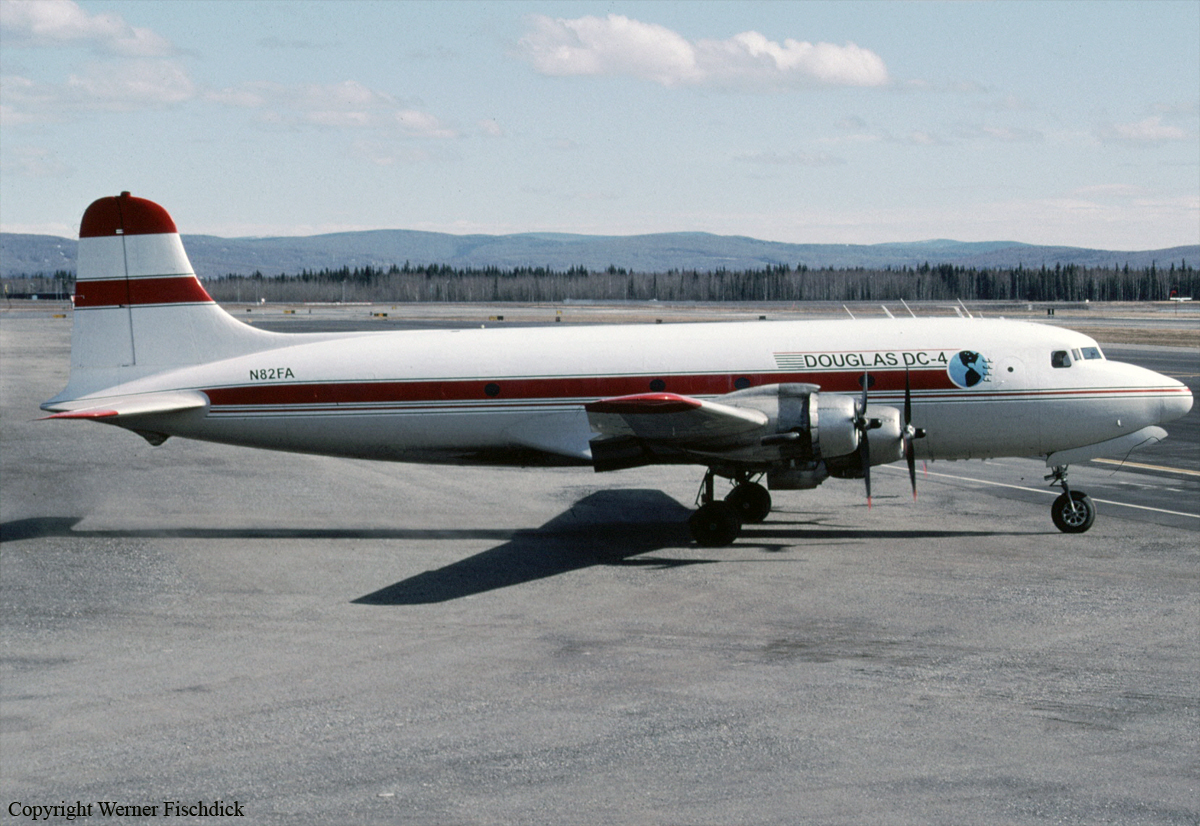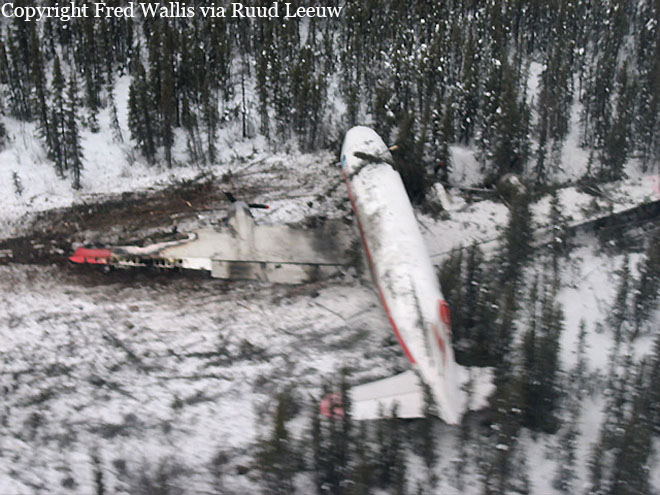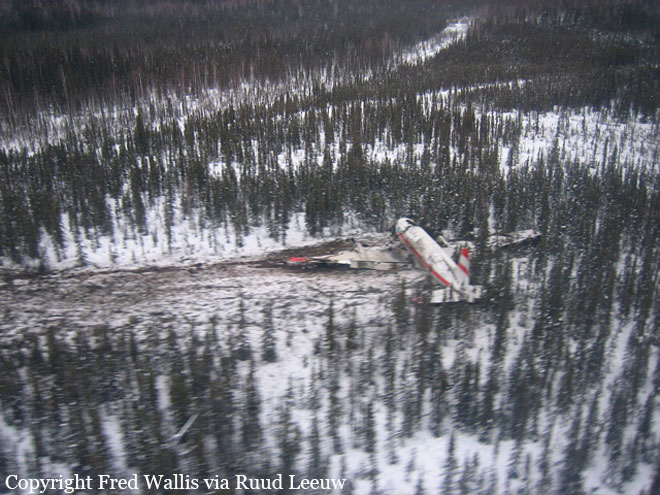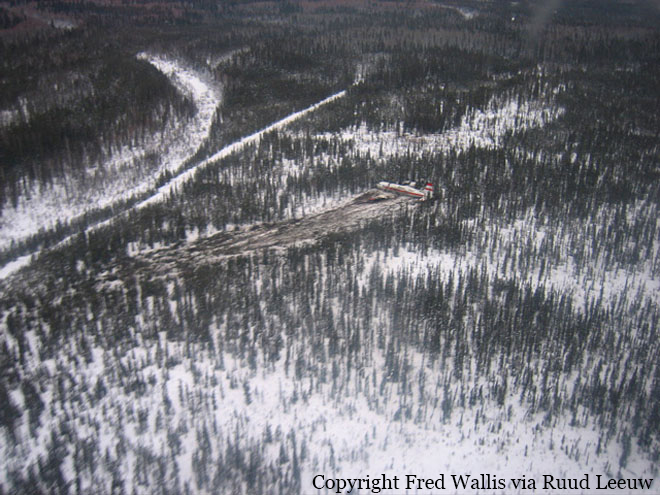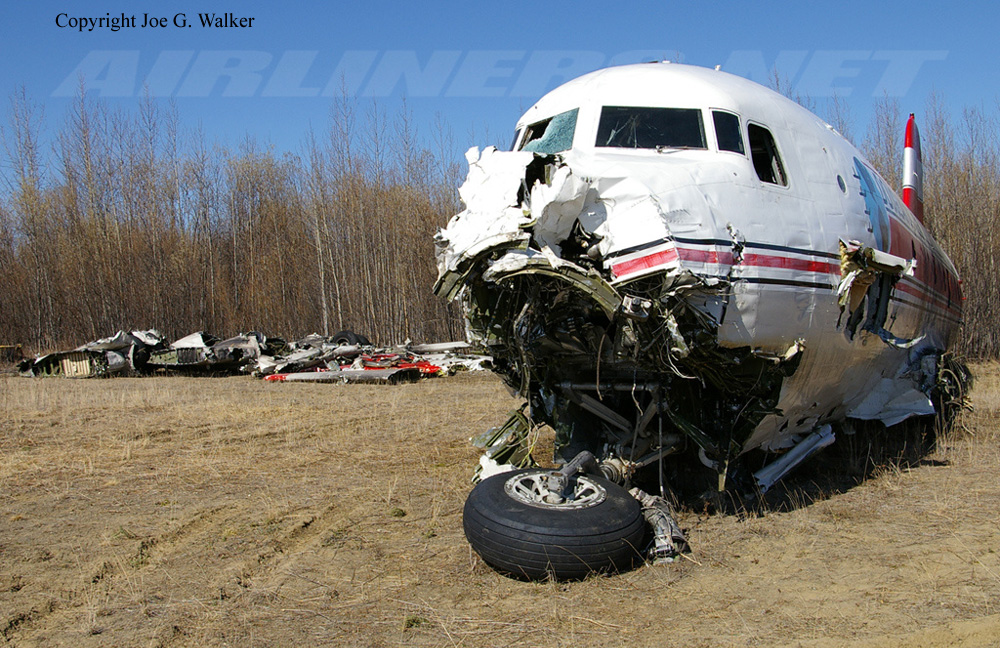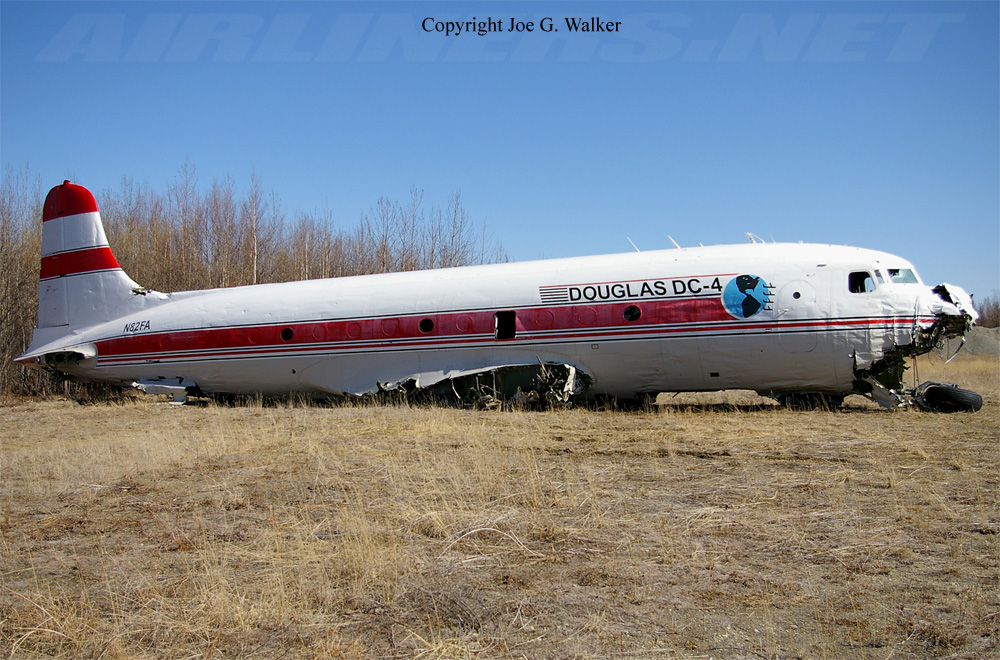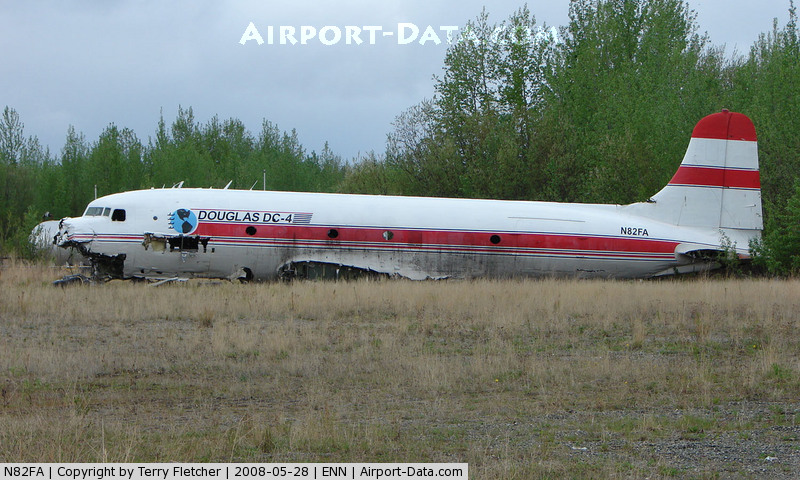Country
Operator Image
Crash of a Carvair ATL-98 in Nixon Fork Mine
Date & Time:
May 30, 2007 at 1200 LT
Registration:
N898AT
Survivors:
Yes
Schedule:
Fairbanks - Nixon Fork Mine
MSN:
42994
YOM:
1946
Crew on board:
2
Crew fatalities:
Pax on board:
0
Pax fatalities:
Other fatalities:
Total fatalities:
0
Captain / Total hours on type:
13600.00
Aircraft flight hours:
55753
Circumstances:
The captain was making a VFR landing approach to a remote mining airstrip in a modified Douglas DC-4 airplane at the end of a cross-country nonscheduled cargo flight. The modified airplane had a raised cockpit above the fuselage to accommodate an upward swinging nose door. During the landing flare/touchdown, the airplane undershot the runway threshold, and right main landing gear struck the lip of the runway. The right main landing gear was torn off, which allowed the nose and right wing to collide with the runway surface. The right wing was torn off the fuselage and caught fire. The fuselage, containing the cargo of fuel bladders, slid to a stop and rolled about 90 degrees to the left. The pilot indicated that due to the additional cockpit height of the modified airplane, versus a standard Douglas DC-4 airplane, the airplane was lower than he perceived.
Probable cause:
An undershoot and collision with the runway when the pilot misjudged the distance/altitude during the landing flare/touchdown.
Final Report:
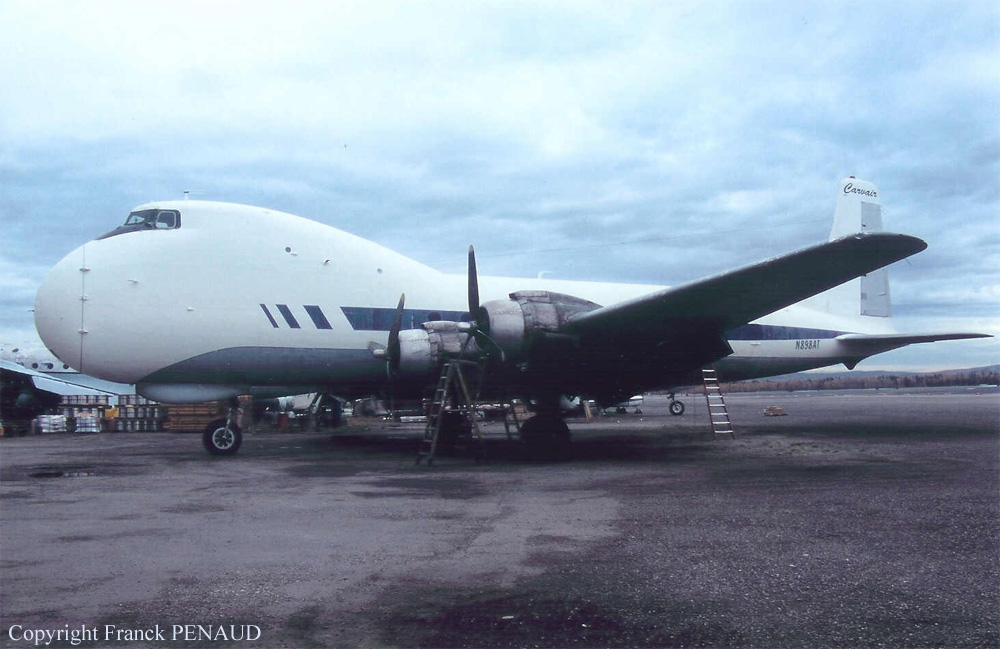
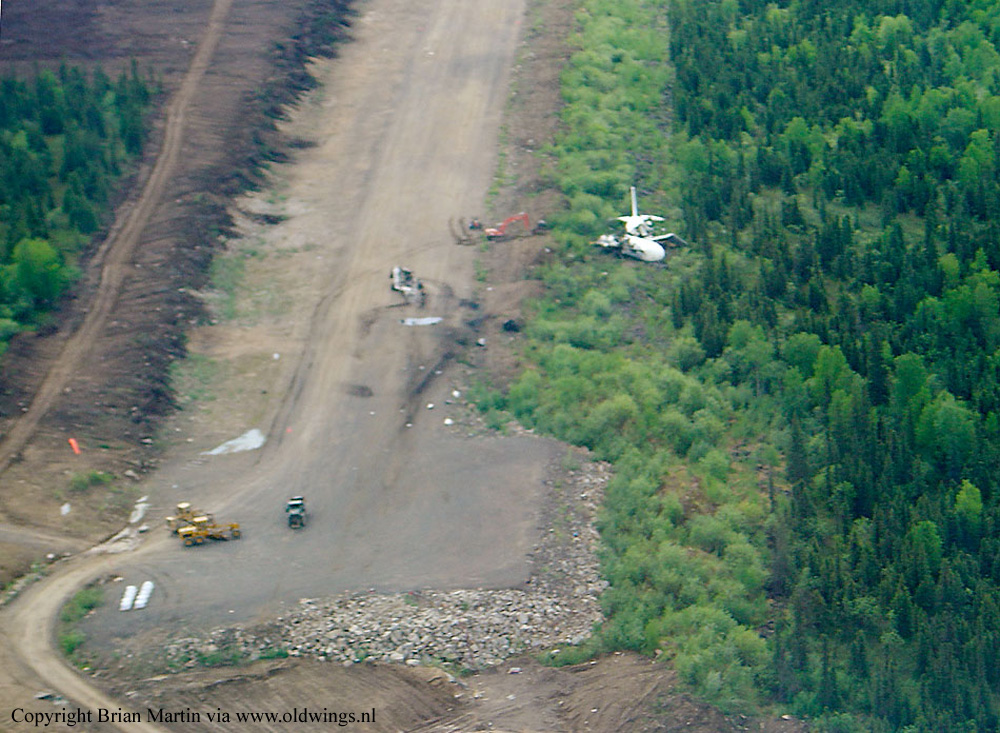
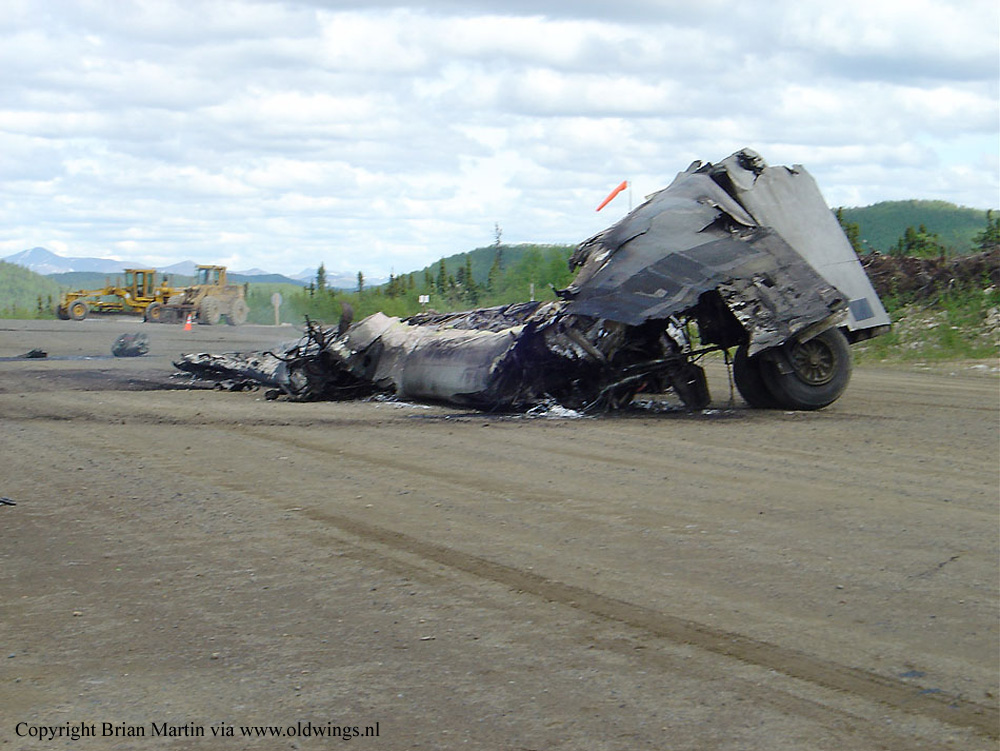
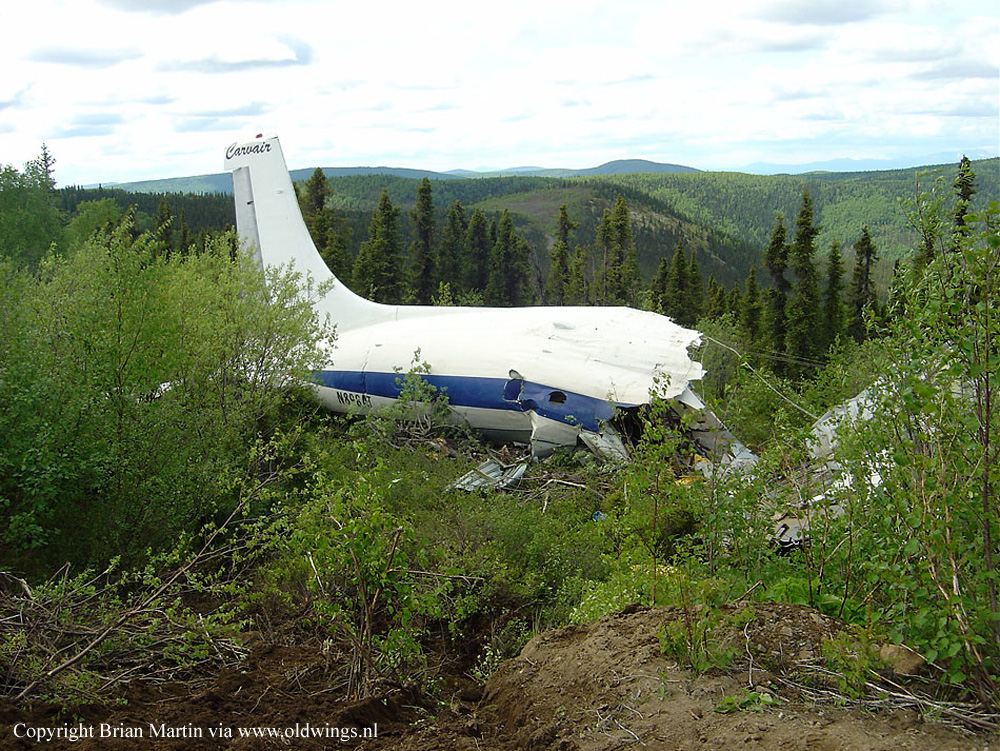
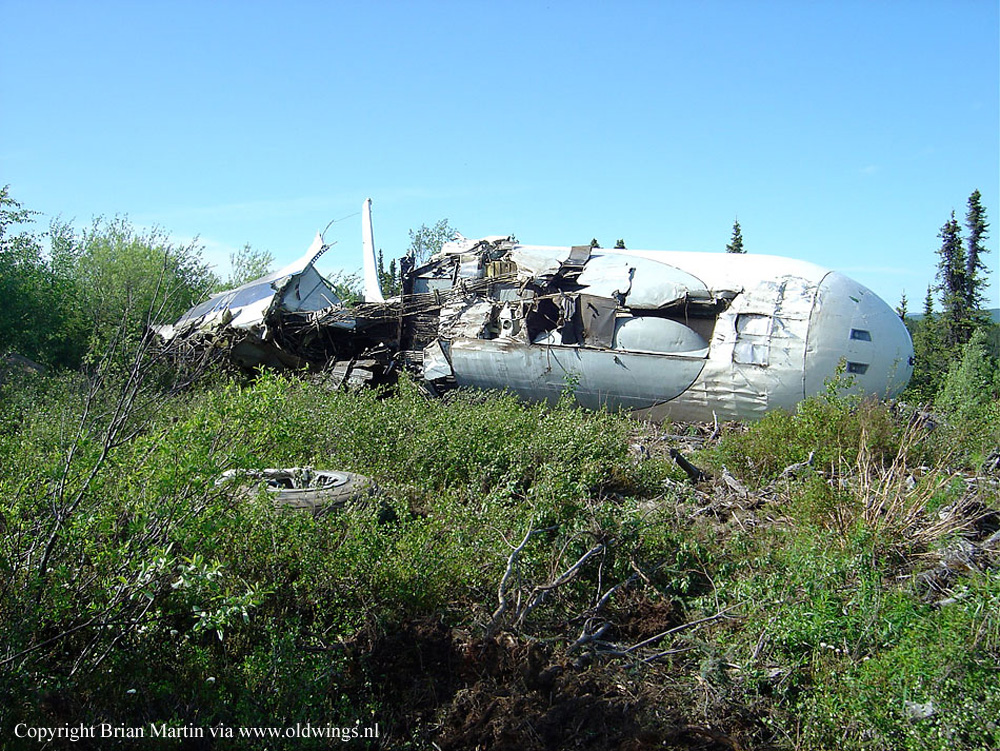
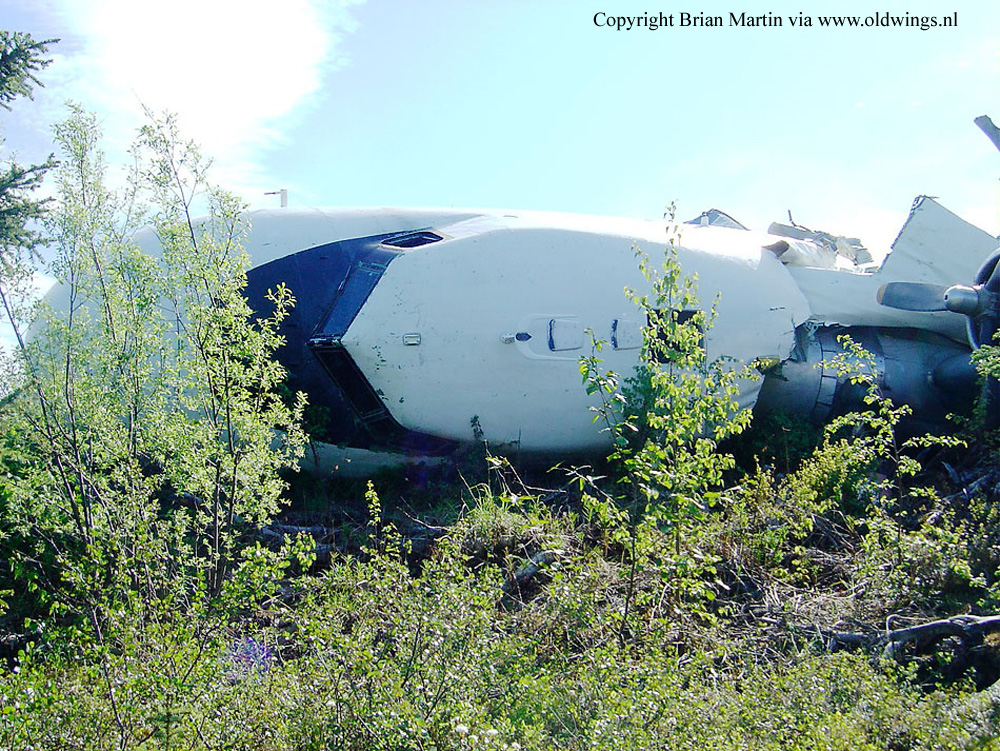
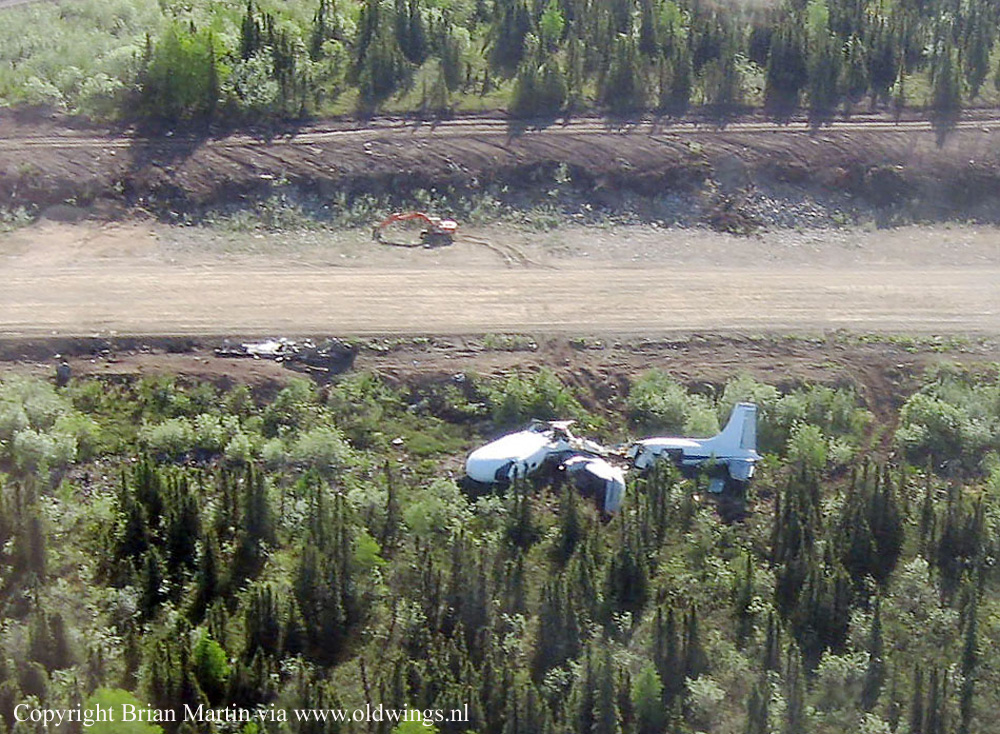
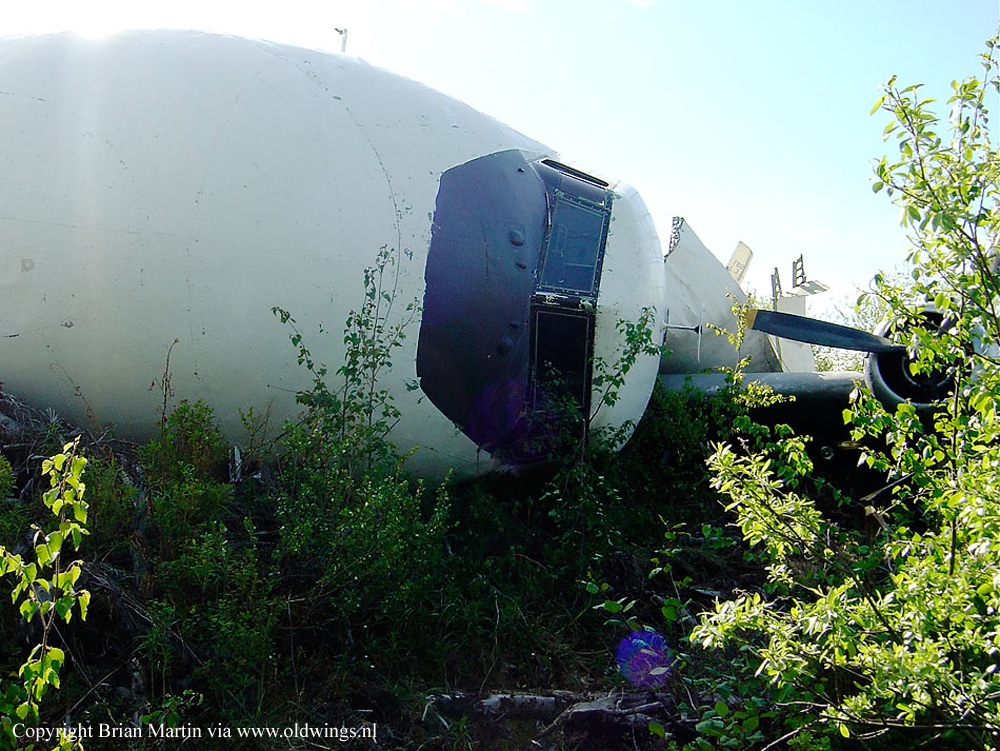
Crash of a Douglas C-54G-DC Skymaster near Nenana
Date & Time:
Jan 17, 2007 at 1550 LT
Registration:
N82FA
Survivors:
Yes
Schedule:
Fairbanks - Nixon Fork Mine
MSN:
35960
YOM:
1945
Crew on board:
2
Crew fatalities:
Pax on board:
0
Pax fatalities:
Other fatalities:
Total fatalities:
0
Captain / Total hours on type:
1550.00
Copilot / Total hours on type:
61
Aircraft flight hours:
28933
Circumstances:
The flight crew was delivering a cargo of fuel in the four-engine airplane under Title 14, CFR Part 125, when the airplane lost power in the number 2 engine. The captain elected to shut the engine down and return to the airport. He said during the shutdown procedure, the engine caught fire, and that the fire extinguishing system was activated. The crew thought the fire was out, but it erupted again, and the captain elected to land the airplane gear-up on the snow covered tundra. Once on the ground, the left wing was consumed by fire. An inspection by company maintenance personnel revealed that an overhauled engine cylinder had failed at its base, resulting in a fire. The airplane was not examined by the NTSB due to its remote location.
Probable cause:
The failure of an engine cylinder during cruise flight, which resulted in an in-flight fire, and subsequent emergency gear-up landing on snow-covered tundra. A factor in the accident was the failure of the fire suppression equipment to extinguish the fire.
Final Report:
